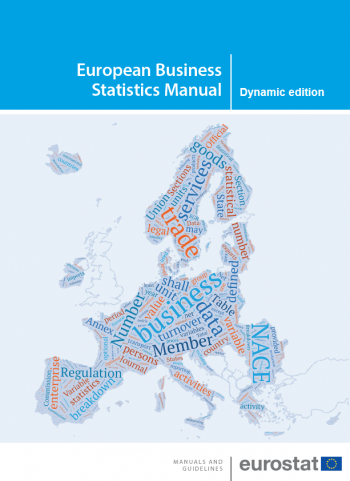European business statistics (EBS) cover the structure, economic activities and performance of businesses, their research and development as well as innovation activities, their information and communication technologies (ICT) usage and e-commerce, and global value chains. They also comprise statistics on the production of manufactured goods and services and the international trade in goods and services as well as essential statistical infrastructure such as national statistical business registers and the EuroGroups register. EBS provide users and key policymakers with much needed information for decision-making or for analytical purposes.
The consolidation of EBS took a significant leap forward with the adoption of the first encompassing EBS Regulation[1]in November 2019, after many years of hard work aiming to pull together the various statistical domains into a coherent legal framework, facilitating improved consistency and harmonisation across all business statistics.
This manual seeks to serve statistical experts and users alike as a comprehensive reference to the world of EBS by providing an overview of business statistics while highlighting the features introduced by the new regulatory framework. Furthermore, the manual describes the various statistical tools and activities supporting EBS production such as statistical units and profiling, classifications, data processing or statistical disclosure control. The manual was drafted by a number of Eurostat experts in consultation with national experts.
The EBS manual is divided into 20 chapters and two annexes, each covering a specific part of the statistical process behind EBS. The links to the chapters below point to the full dynamic PDF edition of the manual; this is a living version that may be updated flexibly. The first version of the manual was published as the official 2021 edition of the manual.

